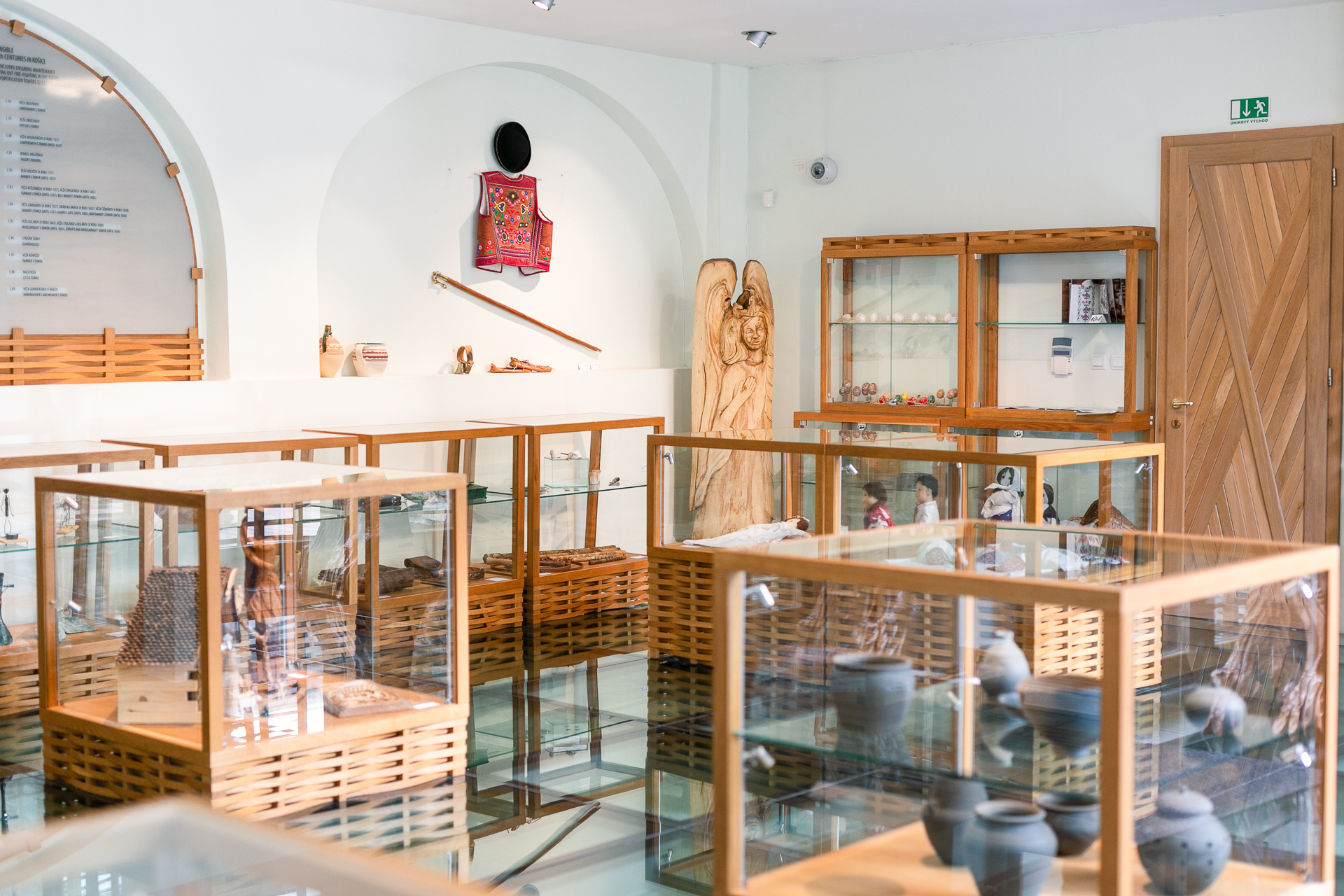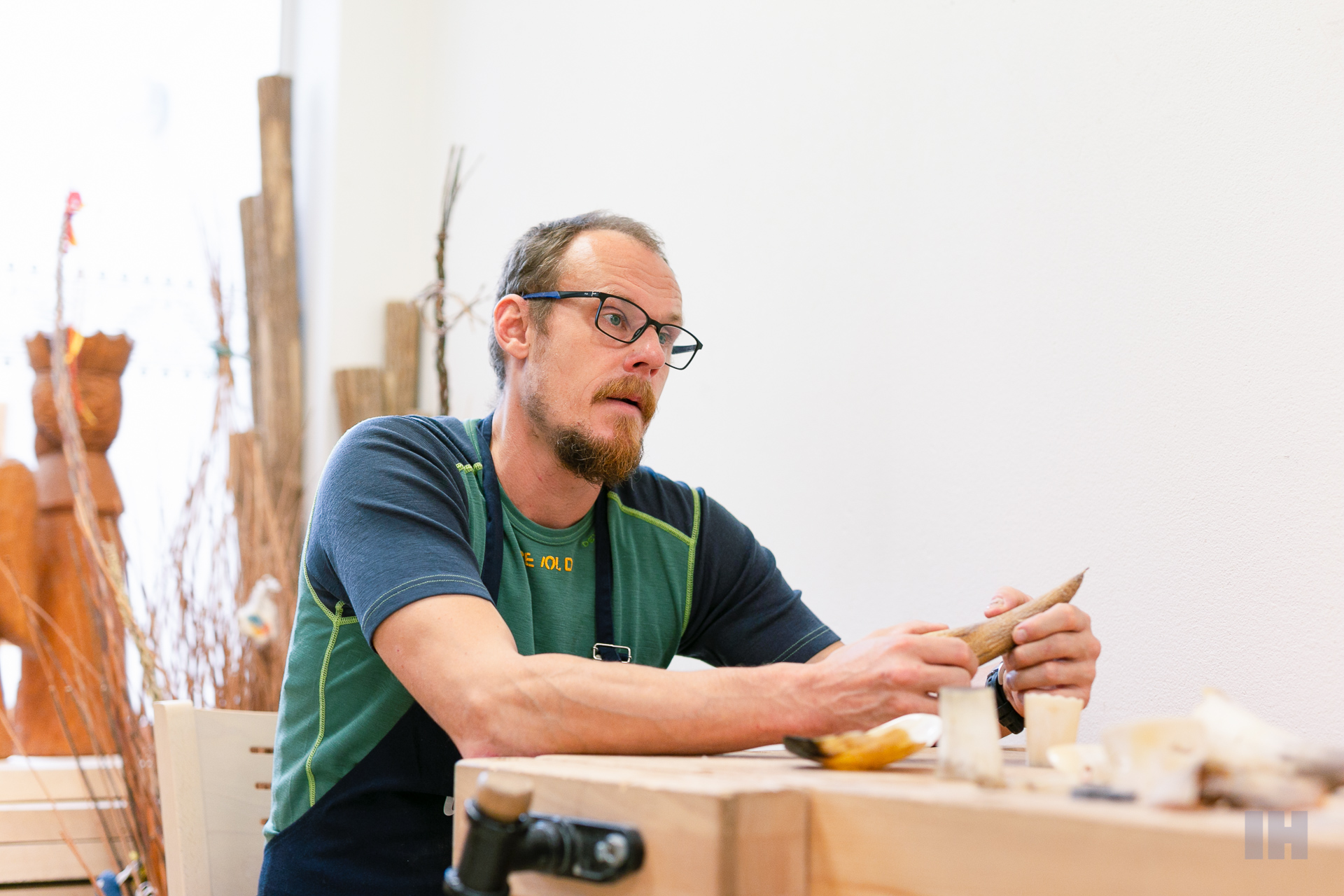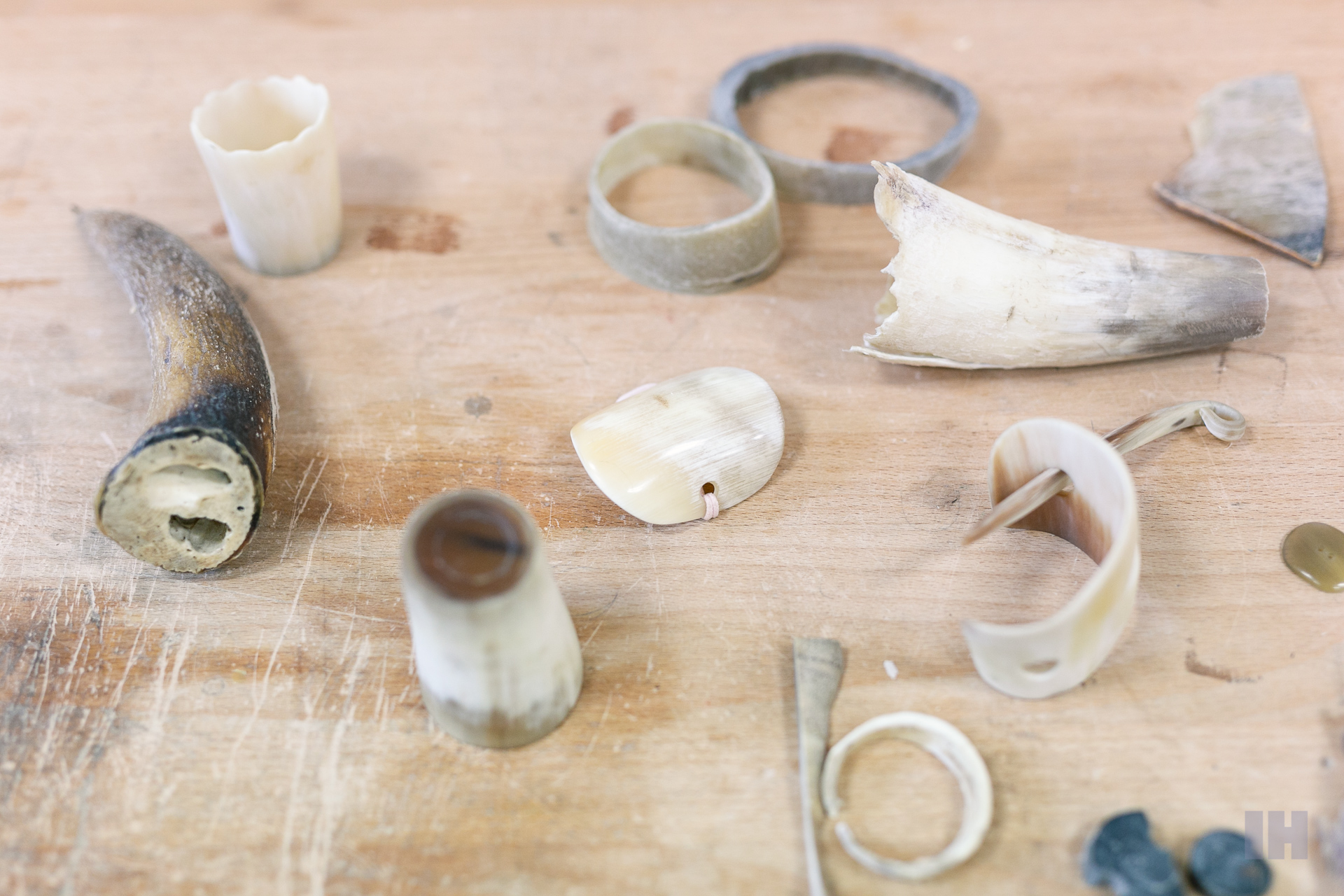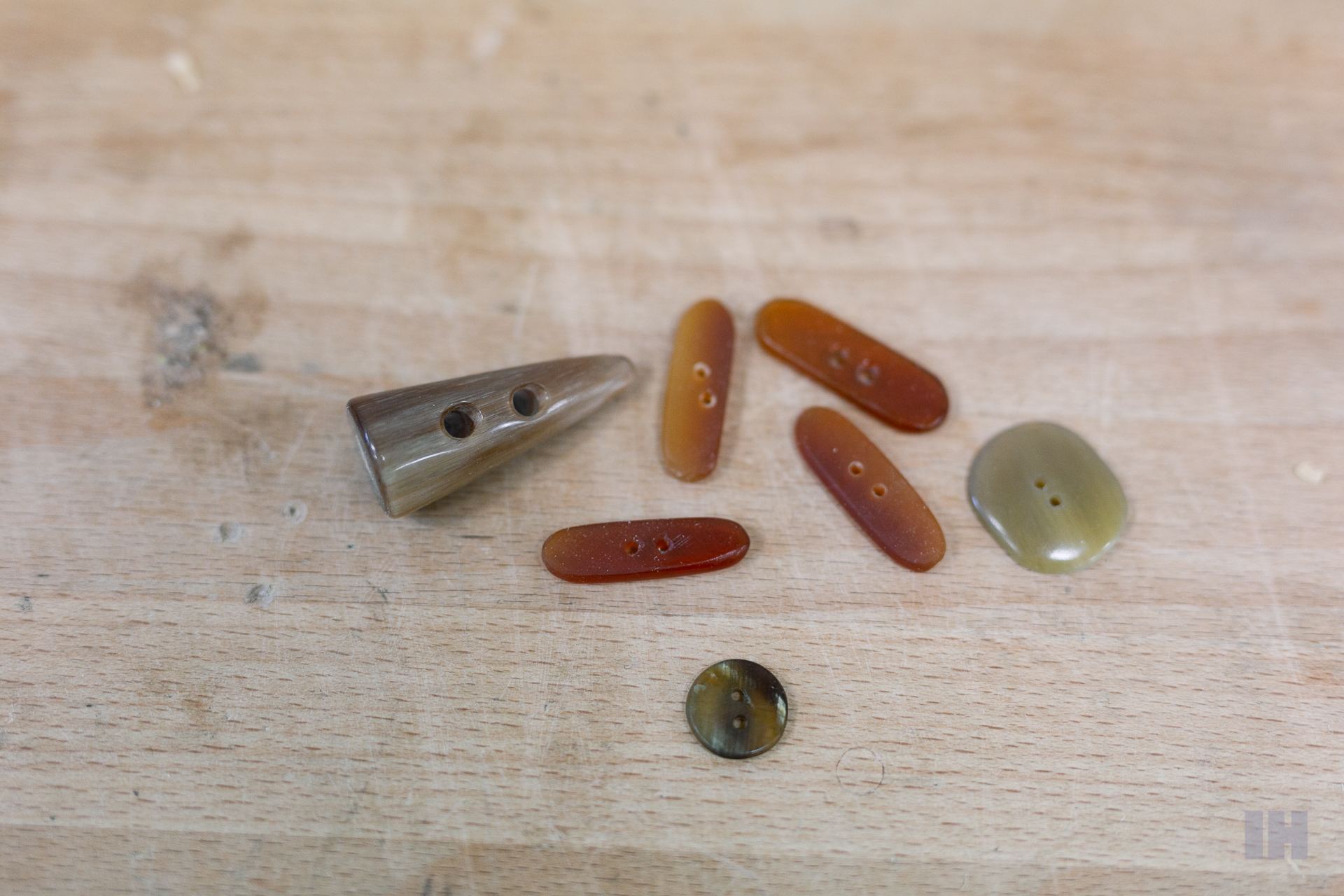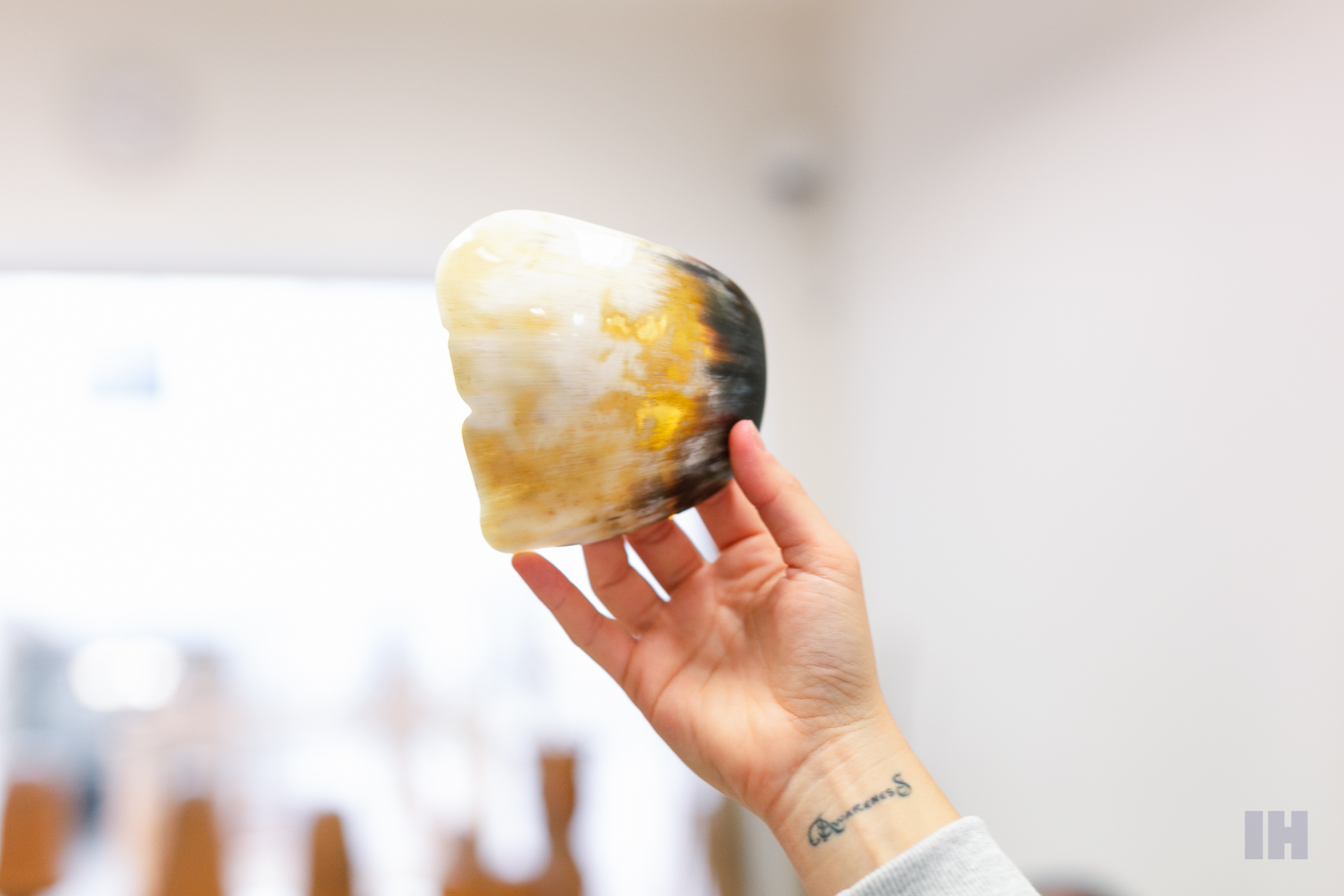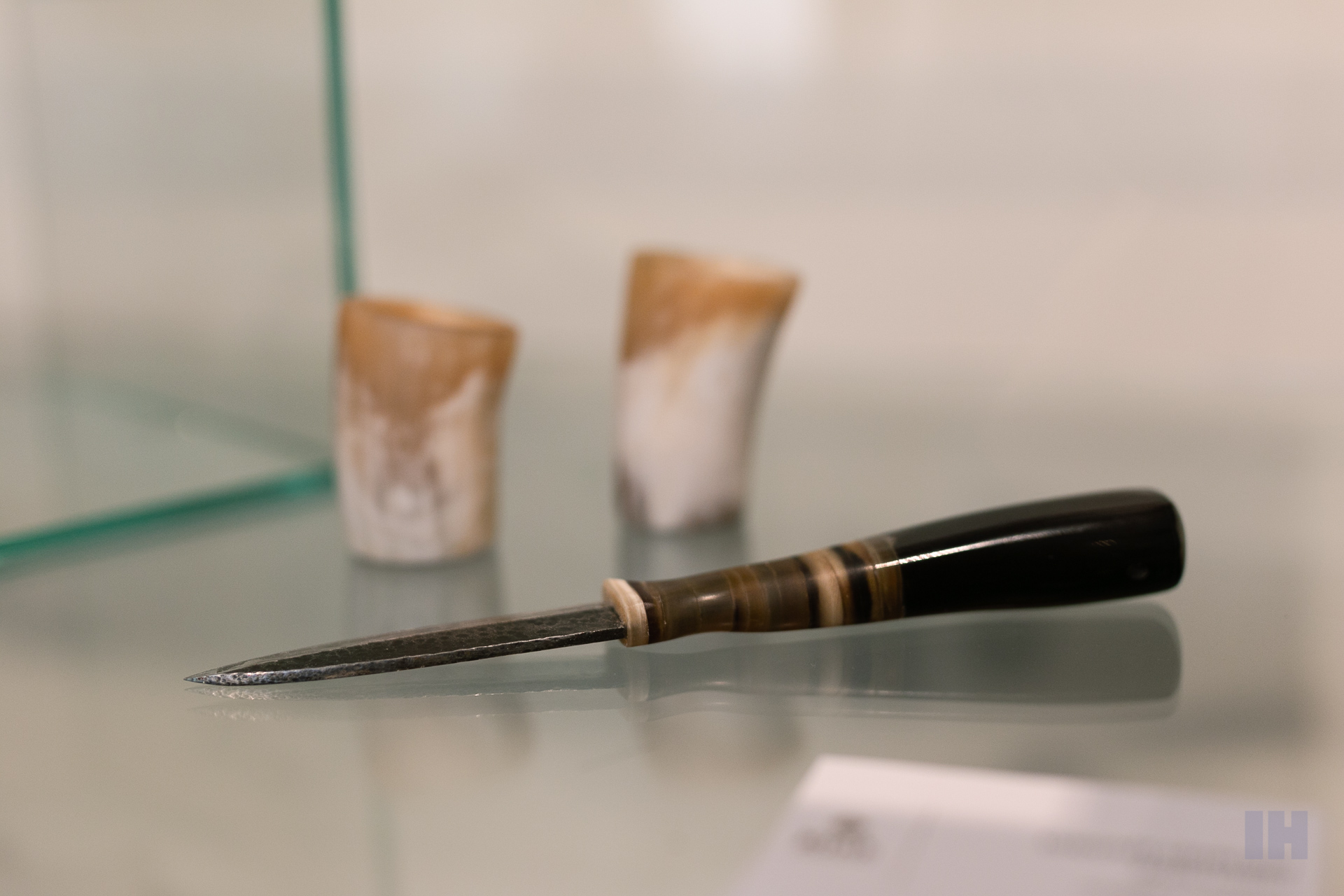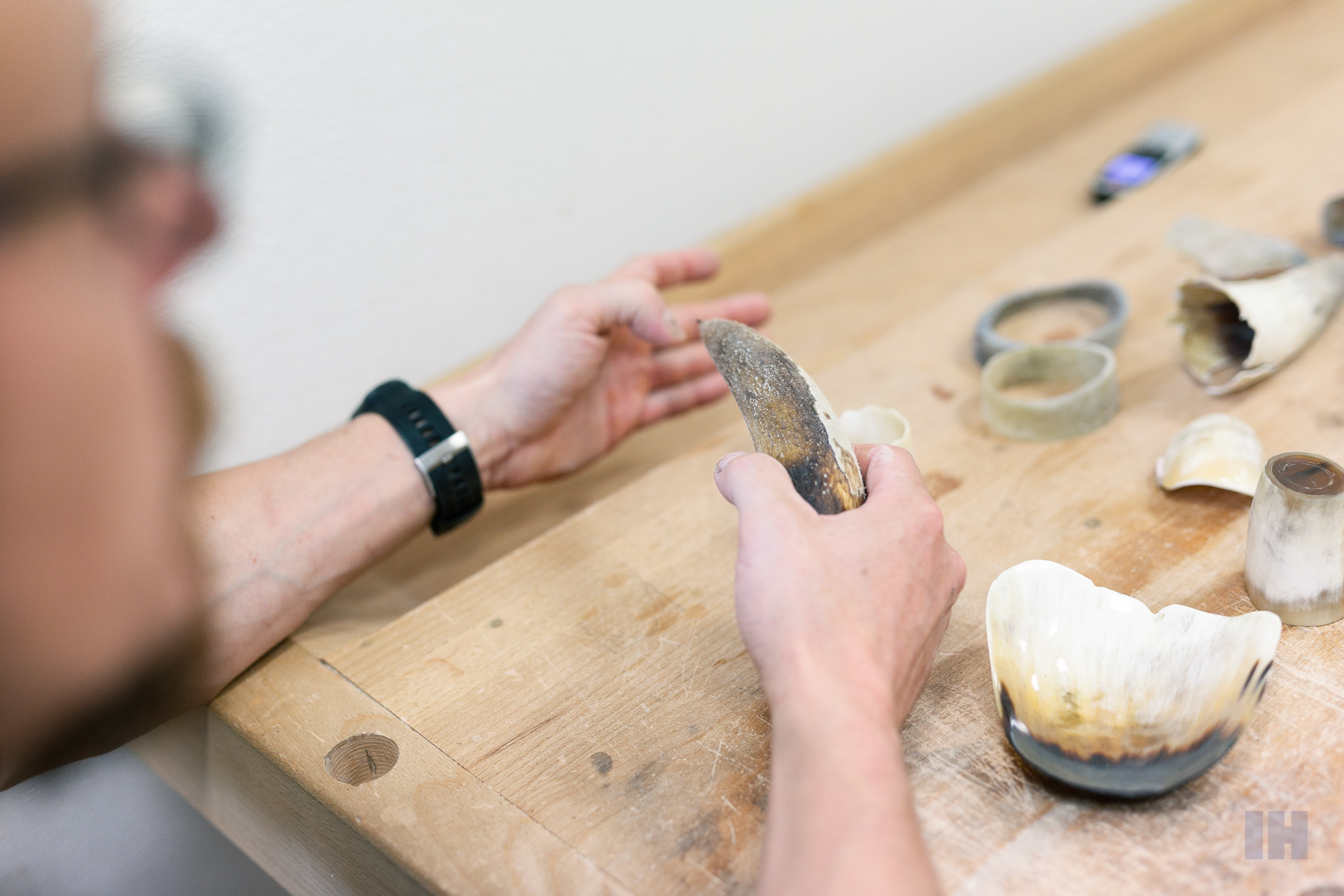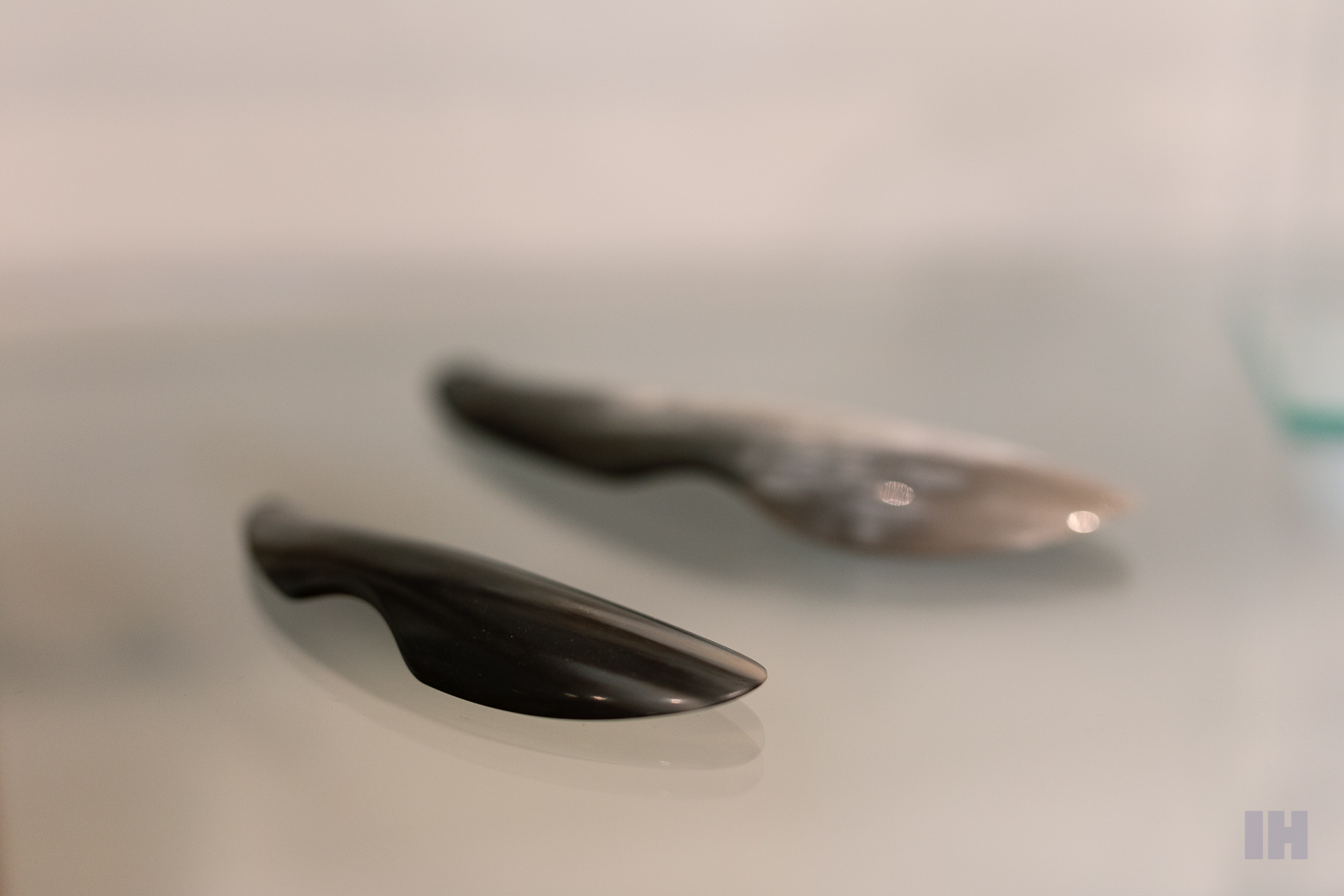I haven’t made my bagpipes yet, but I continue with the horn craft so that it does not disappear completely. Ľudovít Cehelský from ÚĽUV
Even though he lives in Košice today, Ľudovít spent the longest part of his life under the Tatras, in Štrba. During his studies of ethnology and ethnomusicology, he became deeply acquainted with traditional Slovak folklore and crafts. In this way, he got to the horn crafts – using natural material from the roughened skin of animals – and the technological process of its processing. Today, after six years, he is still considered a beginner and with this hobby, he tries to bring enlightenment to the now almost forgotten craft.
Who is Ľudovít Cehelský?
You can recognize Ľudovít Cehelský by his strong Central Slovak accent, even though he has been living in the East for several years by now. In his daily life, he takes care of the smooth operation of ÚĽUV institution – the Center of Folk Art Production, where he is a lecturer and methodologist. He is responsible for course activities, lecturers, orders, statistics and similar administrative activities. In his free time, however, he has indulged in the horn craft, the original craft of comb making. It is a not very well-known craft today, since it processes horn, the natural material from the horns of cows, bulls, oxen, mouflons, turtle shells, horse hooves and the like.
“I play the bagpipes and I am a master in the bagpipe guild. At one point, I wanted to make bagpipes with special parts made of horn. I began to examine the processing and properties of this material in more detail – how to clean it, find out what is inside and how to remove the inner part – bone. Surprisingly, I stayed working with the horn for several years, but I haven’t made bagpipes yet.”
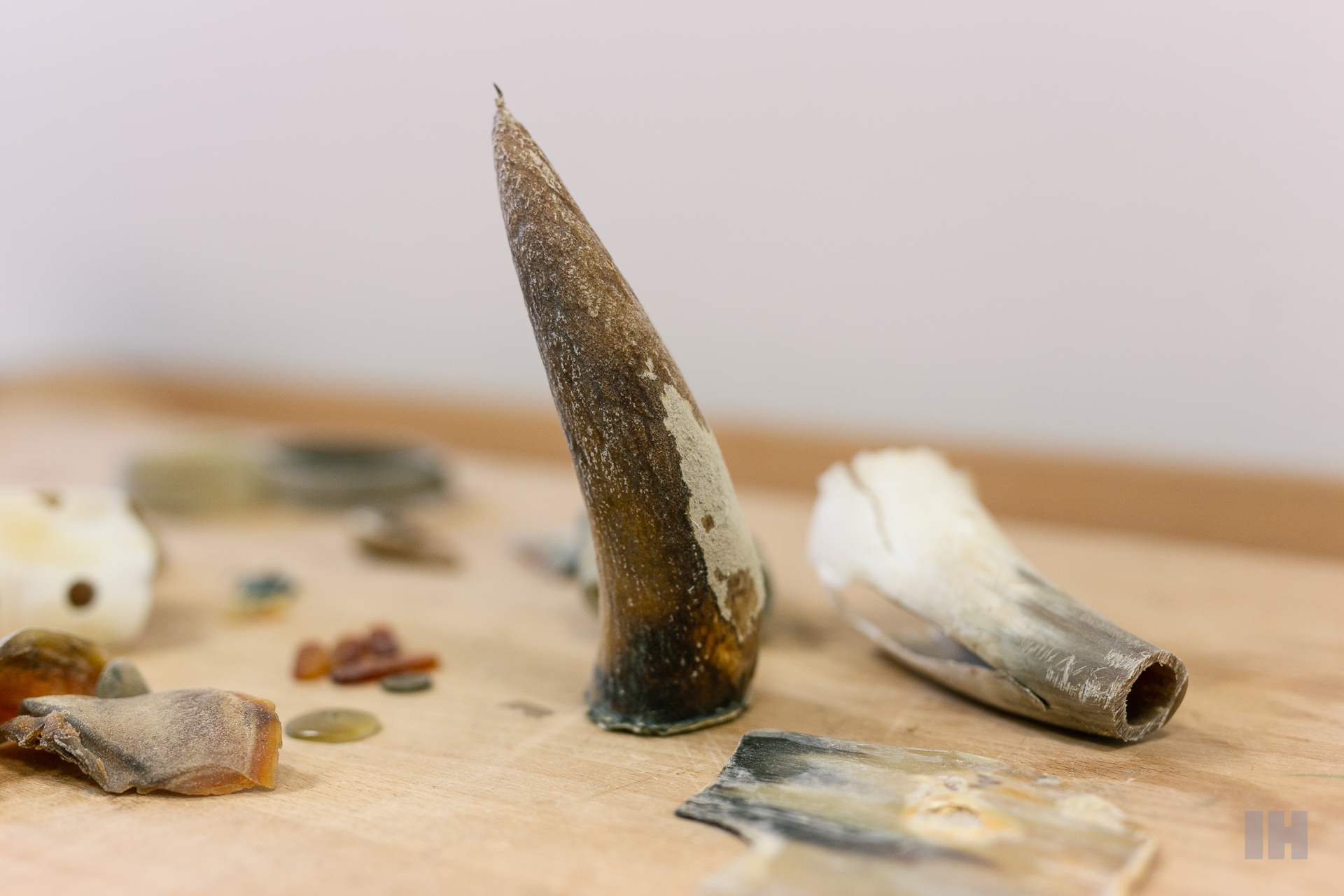
Plastic has replaced the 100% natural material
The horn is obtained from the horns of the mentioned animals, so it is a different type of external organs than antlers. The horn grows on the animal’s whole life and is made up of a protein that shows the animal’s nutrition, the possible age and the previous gravidities of females. Deer shed their antlers every year and these do not contain any bones inside, unlike the horns. In the past, all parts of the animal were processed, and thus the horns – this 100% natural material is the predecessor of today’s plastics, which began to be mass-produced in the second half of the 20th century.
“It is a maximally ecological material. The proof is that it is very difficult to find it in archaeological finds – it contains minerals and nitrates and is completely decomposed in the soil, later transformed into oil of animal origin. The oldest horn items found on the Earth come from Iceland, these are Viking horns from the 9th-10th century.
In the past, the horn craft industry was called comb making because the main products of this material were primarily hair combs. Spoons, forks, bowls, buttons, bracelets, jewellery, knife handles and the like were also produced. It is also important to note that each species of animal and its horns have a different colour – for example, the Slovak spotted cattle has a different colour than the Hungarian Grey.
Comb making craft was very popular, as the material with similar properties had no other alternative in the past. The last production took place sometime between the First and Second World War. Later, there was not enough material to process so the horn was replaced by plastic, and the horn/comb craftsmen switched to another income and formed mostly figural pieces.”
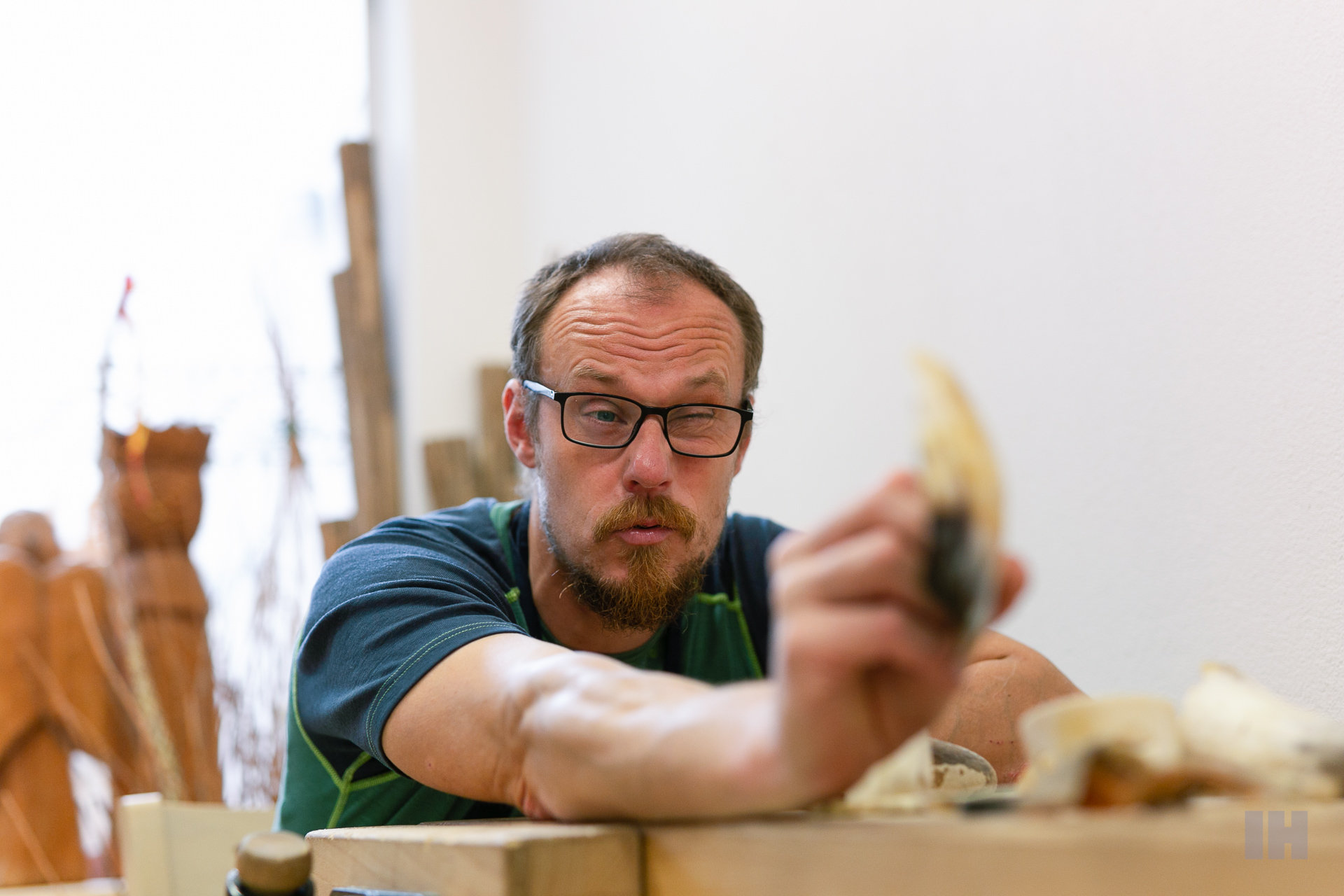
After a year, a pest comes along – larder beetle
In the past, not everyone had horn products and they represented a certain social status, a higher class. It was (and still is) a very rare material that, when thoroughly processed and polished, shines beautifully and is reminiscent of opal stones.
Similar to nails or hair, hooves or horns show signs of good nutrition or poor condition of the animal. The lack of calcium is clearly visible on the horns and, according to the number of stripes, it is possible to determine, for example, how many times a cow was gravid – a cow puts the necessary proteins and nutrients into the calf and it is reflected in the horn as a thin line. Horns have always been rare, today they are imported from Africa or India. The rarest horn came from castrated bulls because their protein was denser and stronger.
“If we want to start working with the horn, we must know that it is a relatively lengthy process and it requires a lot of patience. First, you need to let it rest for a few months, about 3-4. It is similar to wood, it rests for some time in order to be stable and so that it does not contain too much water. When working on the horn early, it may crack. But one has to be careful, after about a year of resting the horn, it gets attacked by only one beetle that eats this material – the larder beetle, Dermestes lardarius.”
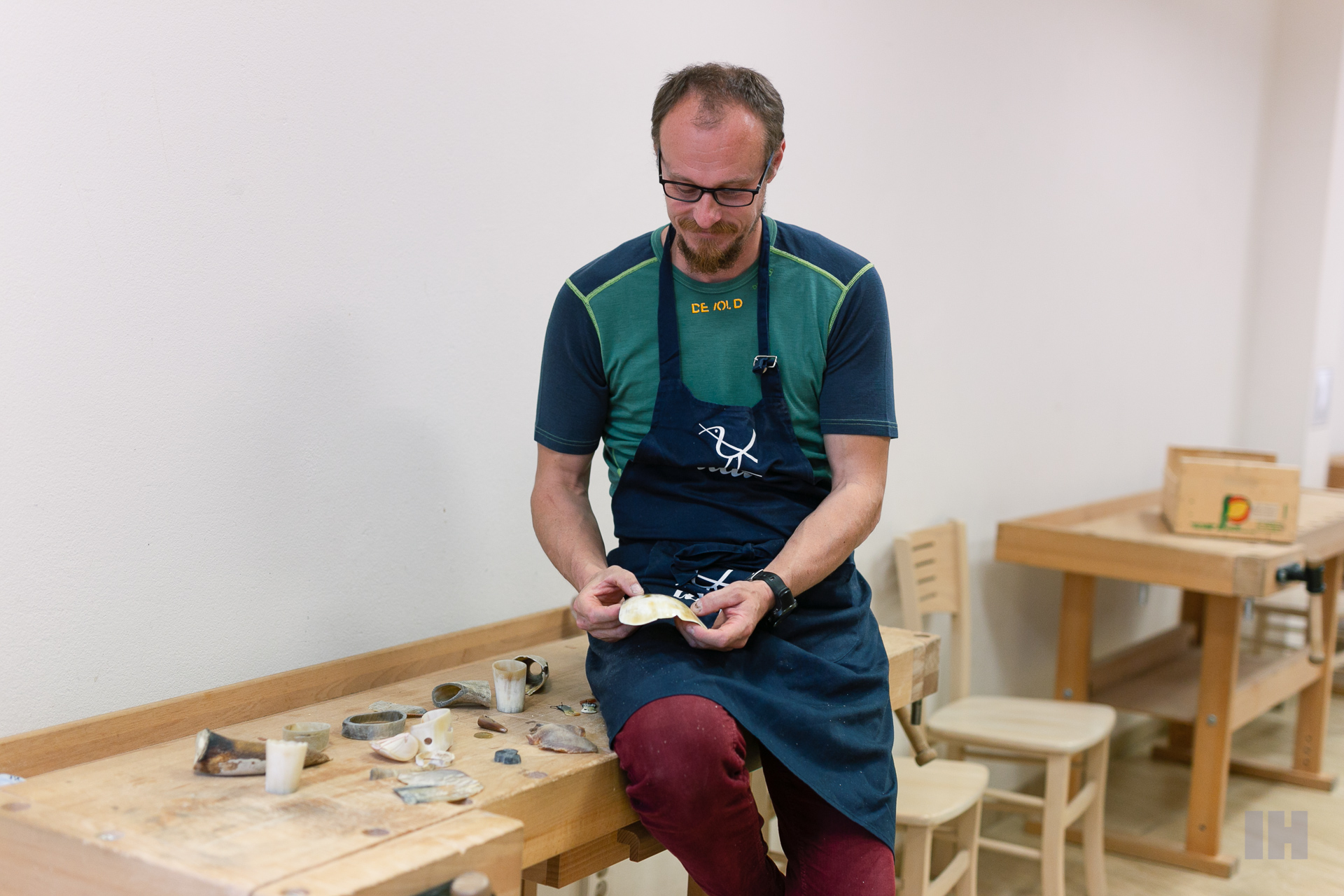
“I use a fryer for the bending.”
In order to make something out of a horn, it needs to be heat-treated – overall, it has very similar properties to plastics. The first way is to boil the horn until it softens, then bend it and let it dry. However, it may dry up for a few days and has its own memory, which means that it tends to return to its original shape.
The second option is to heat the horn over a fire and make a flat plate in a jaw vice in a few minutes. Since one horn consists of several layers, the skill of the horn craftsman lies in separating the individual layers with a chisel, and thus it is possible to process the individual layers into several products. The third way of processing the horn is via hot oil.
“Since this is a natural material, sometimes it is a question of chance, how it will behave. Through practice and experience, the master can predict what a given plate will perform in order to avoid devaluation. For example, horn plates are used to make butter knives, which can be sharply sharpened and do not break. I bought a fryer for the horn, where I fry pieces of the horn for a short time at about 150-170 °C and then bend them in a jaw vice. It’s got this funky fried smell.”
1000 km in search of the horn craft in Slovakia
And what is the situation with this craft in Slovakia and abroad? Ľudovít Cehelský set out on a 1000 km week-long journey in search of wisdom across Slovakia. Processes and practices that he has been taught for several years now are drawn mostly from magazines and a few publications that have been published about the craft in the past. In our country, however, according to him, it is a very under-represented craft – he estimates that up to about 10 people in Slovakia do something with it. Yet our very neighbours in Hungary, he estimates to reach up to 50 craftsmen are even higher – at the decoration phase. By carving ornaments and then filling them with a mixture of carbon black, beeswax and oil, they create patterns typical of individual Hungarian regions.
“I have more or less learned everything I know from books – there aren’t many people I can learn from in our country. Eager to learn more, I also went to Youtube and found out that the Norwegians are quite pioneers in this craft, but they keep their know-how secret. And so, even after a few years, I’m still at the beginning.
Every product I process has brought me a lot of joy and in 6 years I have sold as many as 3. I give them away as gifts most of the time. There is a lot of work with this craft and it is also financially demanding, but it enriches me as a person and I want to bring it closer to people’s consciousness if only for the reason so that they do not confuse horns with antlers.
One of the things I disagree with is that there is a phenomenon of burning horns on current cattle farms. It is said that the animals are aggressive against each other and attack. However, this is more related to the number of animals pushed in one place. It has not been done in the past, it is an evolutionary external organ of animals, and their behavior used to be fine. In this way, we lose very rare material and the craft associated with it.
Therefore, further enlightenment must exist in the horn craft, and I continue this hobby activity because I do not want to give up, even though it is sometimes not the easiest choice. I want the craft to continue in the future.”
